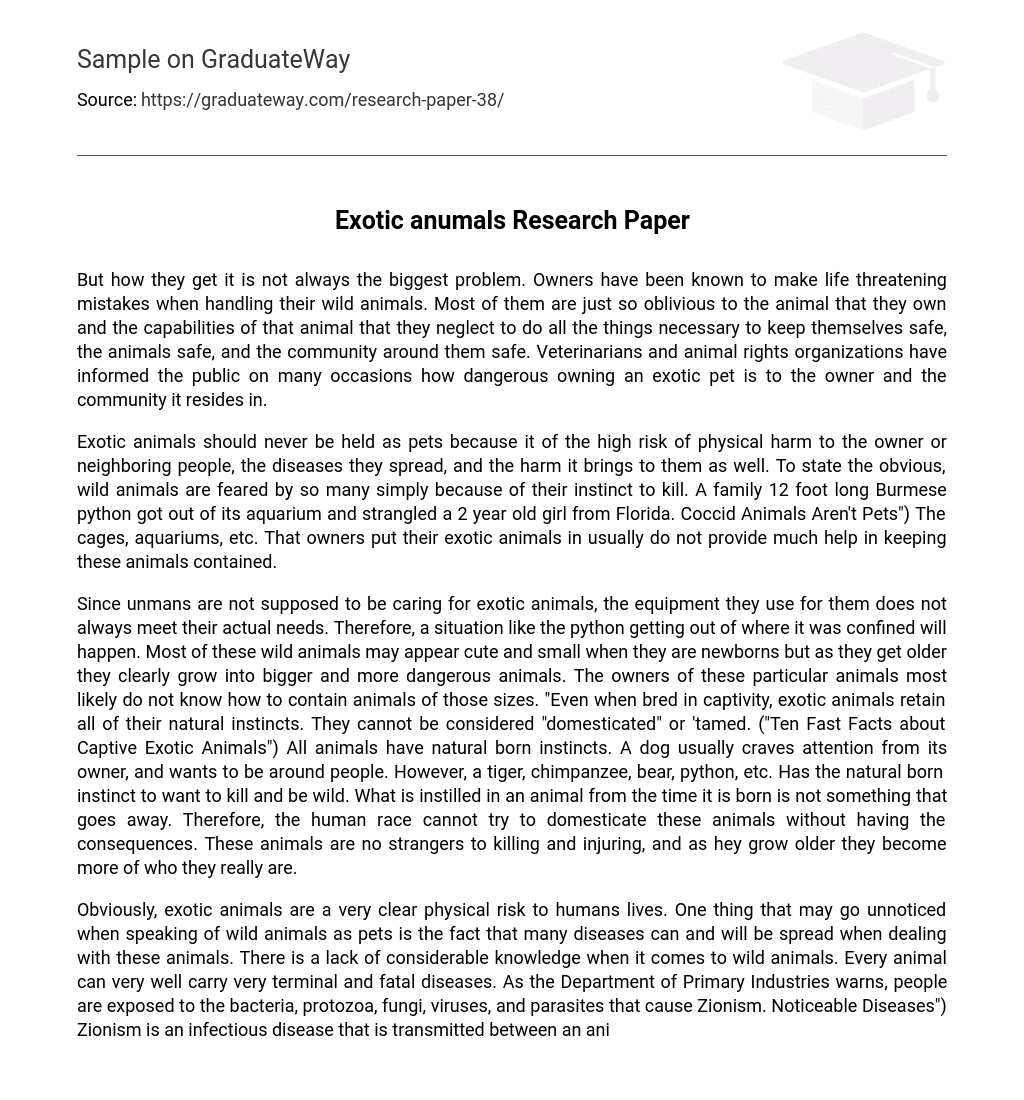While the main emphasis is not always on the acquisition of exotic animals by individuals, there are cases where owners demonstrate risky behavior when dealing with their wild pets. These people frequently lack knowledge about the nature and capabilities of their animals, neglecting to take necessary precautions for their safety as well as that of their pets and the community. Veterinarians and animal rights organizations consistently work towards educating the public about the hazards linked to owning exotic pets.
Keeping exotic animals as pets poses multiple dangers, including the potential for physical harm to owners or those nearby and the transmission of diseases that can threaten public health. Additionally, captivity itself can be harmful to these animals. The instinct of wild animals to kill often creates fear in many people. An unfortunate incident in Florida illustrates the risks involved: a 2-year-old girl was suffocated by a 12-foot long Burmese python that had escaped from its enclosure (Source: “Coccid Animals Aren’t Pets”). Unfortunately, the cages and aquariums commonly used by owners are ineffective at containing these exotic creatures.
Untrained individuals are not suitable for taking care of exotic animals, which can lead to situations like pythons escaping from their enclosures due to inadequate equipment. Despite appearing small and adorable when they are born, these creatures quickly grow larger and more dangerous. Their owners often lack the knowledge and resources necessary to properly contain them. Even if these animals are bred in captivity, they still possess their natural instincts and cannot be considered domesticated or tamed like dogs. Tigers, chimps, bears, pythons, and other similar animals have an innate instinct to kill and roam freely since birth. Attempting to domesticate them without facing any consequences is unrealistic because they naturally inflict harm and injuries. As these animals age, their true nature becomes increasingly apparent.
Keeping exotic animals as pets not only presents a substantial physical danger to human lives but also increases the risk of disease transmission. It is crucial to acknowledge that handling these animals can result in the spread of fatal diseases due to our limited understanding of wild animals and their potential for carrying harmful pathogens. The Department of Primary Industries states that individuals can be exposed to bacteria, protozoa, fungi, viruses, and parasites that cause Zionism – an infectious disease that can be transmitted between humans and animals in rare cases. Typically, Zionism occurs when humans come into contact with unfamiliar or foreign animals. Hence, people who interact with exotic animals must remain vigilant about these risks and take appropriate precautions. Moreover, compared to other species, humans are more susceptible to the various illnesses that these animals might transmit; a tragic instance being the outbreak of rabies.
The Nippy virus infection, known as Iambi, in Malaysia serves as evidence of the occurrence and impact of such diseases. It highlights the potential fatality to humans. In addition to Zionism, certain diseases may result from animals living in unnatural environments. The identification of Zionism is often linked to improved diagnostic tools, but human behavior and alterations to natural habitats are the primary causes of its emergence (Chromed). Lack of proper care by humans also contributes to the development of diseases. When exotic animals are mistreated due to owners’ lack of knowledge, sickness may arise unknowingly. The absence of visible signs of illness in most wild animals makes it challenging for owners to recognize the need for treatment. Consequently, exotic animals are often solely held responsible when issues arise.
Humans often overlook how they harm animals, despite the fact that much of it is deliberate. Meeting the daily physical needs of an exotic animal is a daunting task for humans. Take, for example, species like monkeys, birds, and wildcats, which require traveling several miles each day to maintain their health (ASPIC). Given the unlikelihood of humans being able to do that, these wild animals are unable to live as intended. Moreover, humans also struggle to assert authority over fully grown animals, often resorting to harmful measures.
This quote from the ASPIC states that many people who keep exotic animals cannot meet their needs, resulting in the animals being caged, chained, or even beaten into submission. This mistreatment can have more consequences than one might expect, as it can make the animal more aggressive and prone to killing. In addition, the owners of exotic animals are harming them due to their inability to provide the correct food, leading to potential illness. ASPIC highlights that malnutrition, stress, and behavioral disorders are frequently observed in these animals, and because they tend to hide their illnesses, the conditions often worsen over time.
ASPIC argues that it is challenging to locate and acquire medical treatment for exotic animals due to a lack of expertise among veterinarians in handling unfamiliar species. Additionally, the welfare of these animals greatly depends on their living conditions, as specific elements from their natural habitats are vital for their development and survival. Ultimately, confining exotic animals in domesticated environments goes against their natural inclinations.





